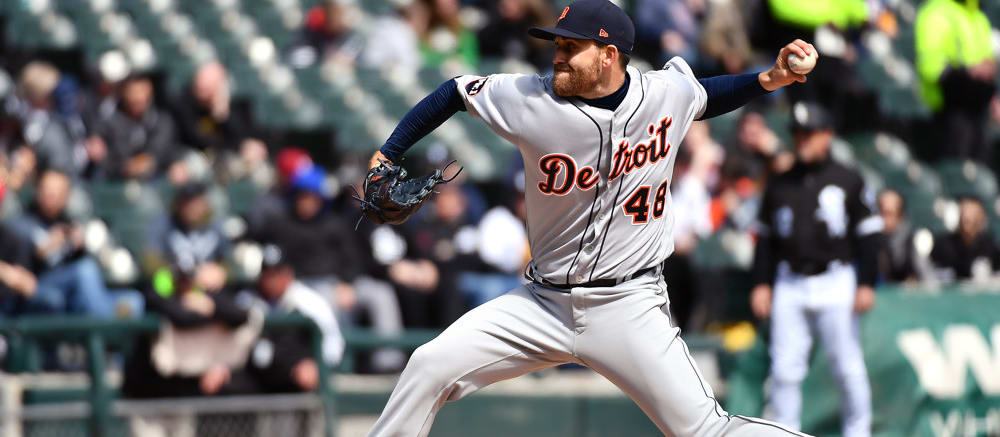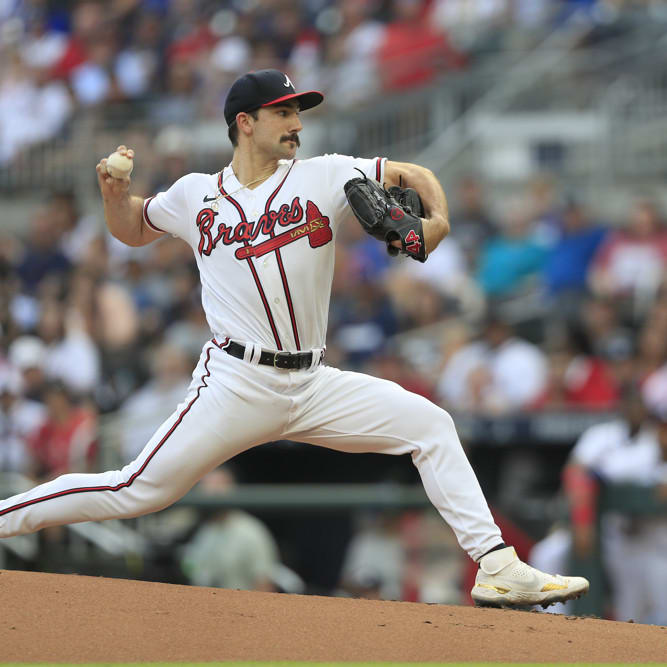This article is part of our MLB Barometer series.
This week's column will take a brief pause from the series of one-off research pieces I've been doing to pass the time in the absence of baseball news, as there's finally been something close to actual baseball news this week. ESPN's Jeff Passan reported last week that the league is considering a proposal to play the season in empty stadiums in the Phoenix area. Bob Nightengale of USA Today reported on a similar plan Friday, in which teams would return to their spring training homes and play games there, again in empty stadiums. In the latter plan, the leagues would realign for one season into the Grapefruit League and Cactus League, with a universal designated hitter a possibility. Per Passan, play could resume as early as sometime in May.
There are, of course, plenty of problems with both plans, and discussing them here doesn't mean I find them particularly likely or advisable. There are significant logistical and health problems involved in both schemes. The league said it wouldn't go forward without a "significant increase in available coronavirus tests with a quick turnaround time." Whether that's feasible any time soon is something this baseball writer (which is decidedly not a synonym for "epidemiologist") doesn't feel particularly qualified to discuss.
There are also notable moral issues with the plans, which could require players to isolate from their families for an indefinite length of time. If you can put a price on that, it's conceivable you could argue that the considerable salaries earned
This week's column will take a brief pause from the series of one-off research pieces I've been doing to pass the time in the absence of baseball news, as there's finally been something close to actual baseball news this week. ESPN's Jeff Passan reported last week that the league is considering a proposal to play the season in empty stadiums in the Phoenix area. Bob Nightengale of USA Today reported on a similar plan Friday, in which teams would return to their spring training homes and play games there, again in empty stadiums. In the latter plan, the leagues would realign for one season into the Grapefruit League and Cactus League, with a universal designated hitter a possibility. Per Passan, play could resume as early as sometime in May.
There are, of course, plenty of problems with both plans, and discussing them here doesn't mean I find them particularly likely or advisable. There are significant logistical and health problems involved in both schemes. The league said it wouldn't go forward without a "significant increase in available coronavirus tests with a quick turnaround time." Whether that's feasible any time soon is something this baseball writer (which is decidedly not a synonym for "epidemiologist") doesn't feel particularly qualified to discuss.
There are also notable moral issues with the plans, which could require players to isolate from their families for an indefinite length of time. If you can put a price on that, it's conceivable you could argue that the considerable salaries earned by major-league baseball players would more than meet that price. It would be significantly harder to argue that the salaries earned by all the support staff necessary to make the league run would be an adequate compensation for that sacrifice, however, a concern raised by the likes of Sean Doolittle.
Nevertheless, it's worth discussing the effects a season played under these conditions would have on the fantasy landscape. The primary effect would be a significant shift in park factors. It's not clear who exactly will play where in these plans, but no team other than the Diamondbacks in the all-Arizona plan or the Diamondbacks, Rays and Marlins in the Arizona-and-Florida plan would keep its usual home park. If possible, teams would presumably play at their typical spring training homes, though that's only possible for half the teams if the league enacts the all-Arizona plan.
Data on the park factors for Cactus League parks appears to be scarce, but a handful of Grapefruit League parks double as High-A parks and have park factors available here from Baseball America. Here is a chart of the runs and homer park factors for those parks, alongside the park factors for their team's usual summer homes (taken from FanGraphs):
| Park | Team | Park Factor (Runs) | Regular-season Stadium Park Factor (Runs) |
|---|---|---|---|
| Charlotte Sports Park | Rays | 101 | 96 |
| Clover Park | Mets | 101 | 94 |
| George M. Steinbrenner Field | Yankees | 105 | 100 |
| Hammond Stadium | Twins | 99 | 101 |
| LECOM Park | Pirates | 104 | 98 |
| Joker Marchant Stadium | Tigers | 88 | 101 |
| Roger Dean Stadium | Cardinals/Marlins | 95 | 96 (Cardinals)/95 (Marlins) |
| Spectrum Field | Phillies | 107 | 100 |
| TD Ballpark | Blue Jays | 112 | 100 |
If some teams do indeed end up playing in their spring homes in Florida, the values for players on the teams listed above should be fairly straightforward to adjust. Mets, Pirates, Phillies and Blue Jays hitters look set to benefit, as would Tigers pitchers, with the corresponding groups set for a tougher challenge than normal. For other teams, all that can be said for sure is they'll lose their typical home park factors. That would benefit Rockies pitchers and Giants hitters, for example, while hurting Rockies hitters and Giants pitchers.
If the Arizona-and-Florida model with its corresponding realignment ends up being pursued, we'll also have to factor in changes in a team's expected strength of schedule. Here is one set of proposed divisions laid out by Nightengale:
GRAPEFRUIT LEAGUE
NORTH: New York Yankees, Philadelphia Phillies, Toronto Blue Jays, Detroit Tigers, Pittsburgh Pirates.
SOUTH: Boston Red Sox, Minnesota Twins, Atlanta Braves, Tampa Bay Rays, Baltimore Orioles.
EAST: Washington Nationals, Houston Astros, New York Mets, St. Louis Cardinals, Miami Marlins.
CACTUS LEAGUE
NORTHEAST: Chicago Cubs, San Francisco Giants, Arizona Diamondbacks, Colorado Rockies, Oakland Athletics.
WEST: Los Angeles Dodgers, Chicago White Sox, Cincinnati Reds, Cleveland Indians, Los Angeles Angels.
NORTHWEST: Milwaukee Brewers, San Diego Padres, Seattle Mariners, Texas Rangers, Kansas City Royals.
That sure looks nice for the Yankees, while it's quite a rough break for the Twins. Out in Arizona, the Indians and White Sox would be in for a tougher challenge than expected, while every team outside the aforementioned Royals would probably be happy with the proposed Northwest division.
This week's barometer will look at some names who would see their stocks rise or fall should either of these plans be adopted.
RISERS
 Matthew Boyd, SP, Tigers: Judging by the spring training park factors shown above, Tigers pitchers should be thrilled about a temporary move south, as they'd be going from a neutral park to a pitcher's paradise. The problem with that fact for fantasy owners is that there just aren't many Tigers pitchers worth owning. Spencer Turnbull would become a slightly more interesting sleeper in Joker Marchant Stadium, but it's Boyd who would stand to benefit most significantly. I'm a huge Boyd fan already, as you can't typically find a combination of strikeout and walk rates like his 30.2 percent and 6.3 percent marks anywhere near his spot in the draft. His 1.9 HR/9 last season meant he posted a mediocre 4.56 ERA despite those excellent numbers, but if a change in home park helps keep the ball in the yard, exciting things could be in store for the lefty.
Matthew Boyd, SP, Tigers: Judging by the spring training park factors shown above, Tigers pitchers should be thrilled about a temporary move south, as they'd be going from a neutral park to a pitcher's paradise. The problem with that fact for fantasy owners is that there just aren't many Tigers pitchers worth owning. Spencer Turnbull would become a slightly more interesting sleeper in Joker Marchant Stadium, but it's Boyd who would stand to benefit most significantly. I'm a huge Boyd fan already, as you can't typically find a combination of strikeout and walk rates like his 30.2 percent and 6.3 percent marks anywhere near his spot in the draft. His 1.9 HR/9 last season meant he posted a mediocre 4.56 ERA despite those excellent numbers, but if a change in home park helps keep the ball in the yard, exciting things could be in store for the lefty.
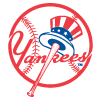 Gleyber Torres, 2B/SS, Yankees: How would you like to see your hitters face the Phillies and Pirates instead of the Rays and Red Sox? That's what would happen for Torres and his Yankee teammates should the divisions realign in the way Nightengale's report suggests. Sure, Torres probably won't be able to hit 13 homers against the Orioles in that case, but the Tigers are barely a downgrade there. Yankee Stadium does edge Steinbrenner Field in terms of its ability to increase homers, but it's evidently overall a less-friendly offensive environment than the latter field, so a temporary move south could actually be good for the young middle infielder.
Gleyber Torres, 2B/SS, Yankees: How would you like to see your hitters face the Phillies and Pirates instead of the Rays and Red Sox? That's what would happen for Torres and his Yankee teammates should the divisions realign in the way Nightengale's report suggests. Sure, Torres probably won't be able to hit 13 homers against the Orioles in that case, but the Tigers are barely a downgrade there. Yankee Stadium does edge Steinbrenner Field in terms of its ability to increase homers, but it's evidently overall a less-friendly offensive environment than the latter field, so a temporary move south could actually be good for the young middle infielder.
 Vladimir Guerrero, Jr., 3B/Bo Bichette, SS, Blue Jays: Toronto's young bats would benefit in multiple ways if the team was forced to play the start of its season in Dunedin, Fla. As mentioned with Torres, the proposed Grapefruit League North division looks particularly soft, so hitters like Guerrero and Bichette could be ready to feast on the weak pitching staffs of the Phillies, Tigers and Pirates. The Blue Jays' spring home also looks to be far more hitter-friendly than the neutral Rogers Centre. If you're looking for a reason to buy a Vlad Jr. breakout or to bet on Bichette continuing his small-sample success, the plan Nightengale reported could be the justification you're looking for.
Vladimir Guerrero, Jr., 3B/Bo Bichette, SS, Blue Jays: Toronto's young bats would benefit in multiple ways if the team was forced to play the start of its season in Dunedin, Fla. As mentioned with Torres, the proposed Grapefruit League North division looks particularly soft, so hitters like Guerrero and Bichette could be ready to feast on the weak pitching staffs of the Phillies, Tigers and Pirates. The Blue Jays' spring home also looks to be far more hitter-friendly than the neutral Rogers Centre. If you're looking for a reason to buy a Vlad Jr. breakout or to bet on Bichette continuing his small-sample success, the plan Nightengale reported could be the justification you're looking for.
 German Marquez, SP, Rockies: How good would Marquez be if he didn't have to play half of his games at Coors Field? We might be about to find out. The 25-year-old owns an unimpressive 4.32 career ERA, but his park-adjusted 88 ERA- indicates that he's been a good deal better than a league-average arm. Among active pitchers, that's tied with Marcus Stroman, Masahiro Tanaka and Alex Wood. Looking at things from a related angle, Marquez has a career 5.01 ERA at home but a 3.72 ERA on the road. The righty's supporting stats remained strong despite his 4.76 ERA last season, as he finished with a 3.54 xFIP. He has the potential to be an asset in the ERA category as well as in strikeouts and WHIP if the season (or a meaningful portion of it) is moved to Arizona, so he should certainly shoot up draft boards if that occurs.
German Marquez, SP, Rockies: How good would Marquez be if he didn't have to play half of his games at Coors Field? We might be about to find out. The 25-year-old owns an unimpressive 4.32 career ERA, but his park-adjusted 88 ERA- indicates that he's been a good deal better than a league-average arm. Among active pitchers, that's tied with Marcus Stroman, Masahiro Tanaka and Alex Wood. Looking at things from a related angle, Marquez has a career 5.01 ERA at home but a 3.72 ERA on the road. The righty's supporting stats remained strong despite his 4.76 ERA last season, as he finished with a 3.54 xFIP. He has the potential to be an asset in the ERA category as well as in strikeouts and WHIP if the season (or a meaningful portion of it) is moved to Arizona, so he should certainly shoot up draft boards if that occurs.
 Tommy Edman, 2B/3B, Cardinals: Edman is a popular sleeper this spring after showing a strong power-speed combo in his 92-game debut last season. While the risk that he won't be able to repeat his 123 wRC+ (his highest mark at any stop since short-season ball in 2016) isn't mitigated by the plans to start the season down south, his playing-time risk is certainly lessened by the idea that realigned divisions might necessitate a season with a universal designated hitter. Edman played five positions last season, so the Cardinals can fit him in the lineup on a regular basis as long as he's hitting well, but a slump combined with a Matt Carpenter bounceback would likely eat into his playing time. If the Cardinals are able to start an extra hitter each game, that obviously decreases the odds that Edman will have to sit. The designated hitter would also boost the fantasy value of Edman's teammates, with Carpenter (who looks like the odd man out) and Tyler O'Neill (who could be quickly reduced to a bench role once Dylan Carlson arrives) seemingly the primary beneficiaries.
Tommy Edman, 2B/3B, Cardinals: Edman is a popular sleeper this spring after showing a strong power-speed combo in his 92-game debut last season. While the risk that he won't be able to repeat his 123 wRC+ (his highest mark at any stop since short-season ball in 2016) isn't mitigated by the plans to start the season down south, his playing-time risk is certainly lessened by the idea that realigned divisions might necessitate a season with a universal designated hitter. Edman played five positions last season, so the Cardinals can fit him in the lineup on a regular basis as long as he's hitting well, but a slump combined with a Matt Carpenter bounceback would likely eat into his playing time. If the Cardinals are able to start an extra hitter each game, that obviously decreases the odds that Edman will have to sit. The designated hitter would also boost the fantasy value of Edman's teammates, with Carpenter (who looks like the odd man out) and Tyler O'Neill (who could be quickly reduced to a bench role once Dylan Carlson arrives) seemingly the primary beneficiaries.
FALLERS
 Nolan Arenado, 3B/Trevor Story, SS, Rockies: Arenado is a perennial fantasy stud, but his true talent level with the bat might be not quite as high as you'd think. In his best season according to wRC+, 2018, his 132 mark in that category was merely good for 22nd-best among qualified hitters, sandwiched between Xander Bogaerts and David Peralta. He's a capable and consistent hitter, posting a wRC+ between 126 and 132 in each of the last four seasons, but his lack of speed will start to stand out if he doesn't have his home park to boost his power output from very good to outstanding. The 65-spot gap between Arenado and Eugenio Suarez (using NFBC ADP since the start of March), who's posted a wRC+ of 135 and 133 in the last two seasons and also doesn't really run, should shrink noticeably if Coors Field is out of the picture.
Nolan Arenado, 3B/Trevor Story, SS, Rockies: Arenado is a perennial fantasy stud, but his true talent level with the bat might be not quite as high as you'd think. In his best season according to wRC+, 2018, his 132 mark in that category was merely good for 22nd-best among qualified hitters, sandwiched between Xander Bogaerts and David Peralta. He's a capable and consistent hitter, posting a wRC+ between 126 and 132 in each of the last four seasons, but his lack of speed will start to stand out if he doesn't have his home park to boost his power output from very good to outstanding. The 65-spot gap between Arenado and Eugenio Suarez (using NFBC ADP since the start of March), who's posted a wRC+ of 135 and 133 in the last two seasons and also doesn't really run, should shrink noticeably if Coors Field is out of the picture.
Story's stock probably shouldn't drop to quite the same extent, as speed is a big part of his game. He's stolen 50 bases the last two seasons combined, and leaving Coors Field shouldn't stop him from running. His power is definitely a large part of his value as well, however, so the loss of a fair number of homers should undoubtedly be a hit. He's edged out Trea Turner in NFBC ADP since the start of March by a very narrow margin (10.3 to 10.5), as his power advantage offsets Turner's better wheels. If that power edge shrinks due to a change in home park, expect Story to fall behind Turner by at least a handful of picks.
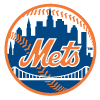 Jacob deGrom, SP, Mets: Don't overreact to deGrom's placement on this list, as the back-to-back Cy Young winner would still be an elite pitcher on a tee-ball field. He clearly deserves the vast majority of the credit for his recent success, but he's certainly been helped by the fact that he calls pitcher-friendly Citi Field home. For his career, he has a 2.21 ERA at home and a 3.05 ERA on the road. Additionally, the proposed division realignment doesn't look great for the Mets, as they'd swap out the Braves and Phillies for the Astros and Cardinals. While he'll still be an elite pitcher wherever the Mets call home this season, the proposed changes could at least drop deGrom from the middle of the first round (in a 15-team league) to closer to the turn.
Jacob deGrom, SP, Mets: Don't overreact to deGrom's placement on this list, as the back-to-back Cy Young winner would still be an elite pitcher on a tee-ball field. He clearly deserves the vast majority of the credit for his recent success, but he's certainly been helped by the fact that he calls pitcher-friendly Citi Field home. For his career, he has a 2.21 ERA at home and a 3.05 ERA on the road. Additionally, the proposed division realignment doesn't look great for the Mets, as they'd swap out the Braves and Phillies for the Astros and Cardinals. While he'll still be an elite pitcher wherever the Mets call home this season, the proposed changes could at least drop deGrom from the middle of the first round (in a 15-team league) to closer to the turn.
 Hyun-Jin Ryu, SP, Blue Jays: While Blue Jays hitters should benefit from spending the summer in Florida, the same can't be said about the team's pitching staff. Ryu was already in line to have to deal with a tougher home park after moving from pitcher-friendly Dodger Stadium to the neutral Rogers Centre, but a summer spent in the hitters' paradise that TD Ballpark down in Dunedin seems to be would be another thing entirely. Ryu gets fewer strikeouts than most pitchers being drafted around him, so he's more susceptible to the whims of balls in play and therefore more susceptible to a change in park than other starters. He's been excellent at avoiding homers over the last two seasons, but TD Ballpark is particularly homer-friendly, so it's possible that skill could disappear if he's forced to spend a fair portion of the season in Florida. It's worth pointing out in his favor, however, that the appeal of the realigned division as outlined in the paragraph on Guerrero and Bichette does at least give Ryu something of a boost, but the overall effects of the shakeup still appear to be negative.
Hyun-Jin Ryu, SP, Blue Jays: While Blue Jays hitters should benefit from spending the summer in Florida, the same can't be said about the team's pitching staff. Ryu was already in line to have to deal with a tougher home park after moving from pitcher-friendly Dodger Stadium to the neutral Rogers Centre, but a summer spent in the hitters' paradise that TD Ballpark down in Dunedin seems to be would be another thing entirely. Ryu gets fewer strikeouts than most pitchers being drafted around him, so he's more susceptible to the whims of balls in play and therefore more susceptible to a change in park than other starters. He's been excellent at avoiding homers over the last two seasons, but TD Ballpark is particularly homer-friendly, so it's possible that skill could disappear if he's forced to spend a fair portion of the season in Florida. It's worth pointing out in his favor, however, that the appeal of the realigned division as outlined in the paragraph on Guerrero and Bichette does at least give Ryu something of a boost, but the overall effects of the shakeup still appear to be negative.
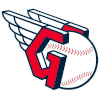 Shane Bieber, SP/Mike Clevinger, SP, Indians: I love both of these pitchers because of their elite strikeout numbers and all-around games, but the proposed division realignment mentioned by Nightengale is undeniably a blow to both of their values (along with the values of the rest of Cleveland's rotation). Losing the Twins' excellent offense would theoretically be a benefit, but not when they're replaced by the Dodgers. Losing the chance to beat up on the Tigers and Royals, teams the pair combined to post a 1.77 ERA against over 11 starts last season, definitely hurts. Replacing them with two promising lineups in the Reds and Angels certainly isn't what those who drafted Bieber and Clevinger early would want.
Shane Bieber, SP/Mike Clevinger, SP, Indians: I love both of these pitchers because of their elite strikeout numbers and all-around games, but the proposed division realignment mentioned by Nightengale is undeniably a blow to both of their values (along with the values of the rest of Cleveland's rotation). Losing the Twins' excellent offense would theoretically be a benefit, but not when they're replaced by the Dodgers. Losing the chance to beat up on the Tigers and Royals, teams the pair combined to post a 1.77 ERA against over 11 starts last season, definitely hurts. Replacing them with two promising lineups in the Reds and Angels certainly isn't what those who drafted Bieber and Clevinger early would want.

